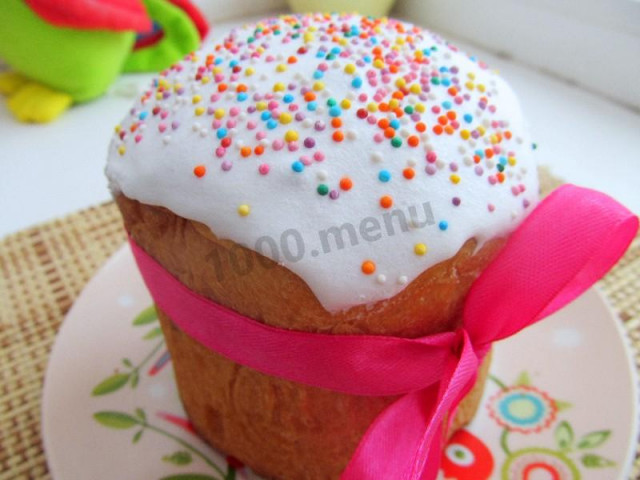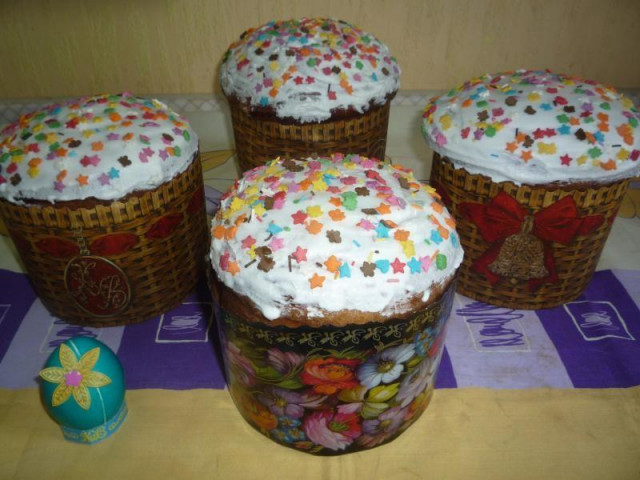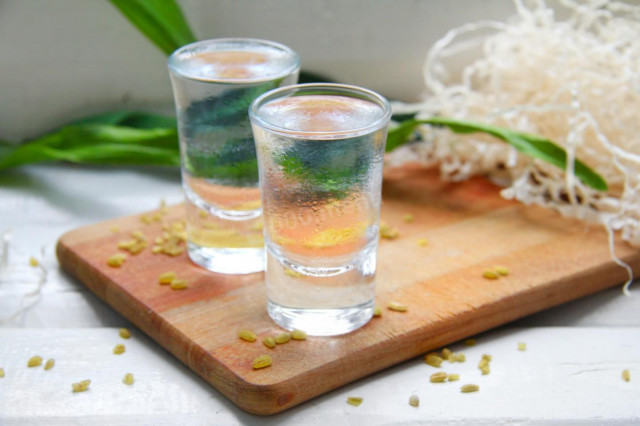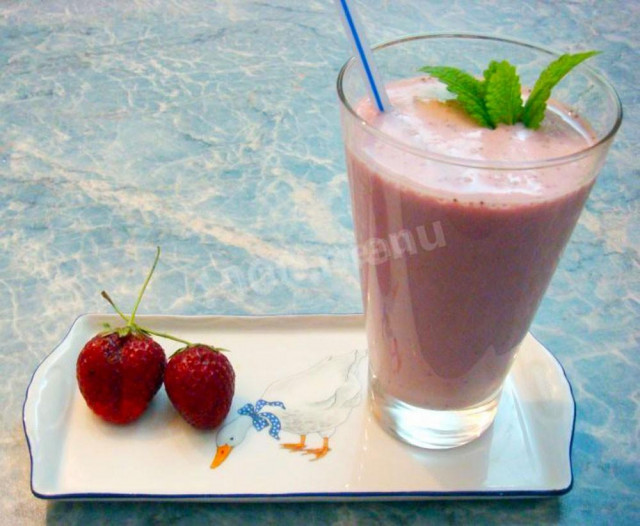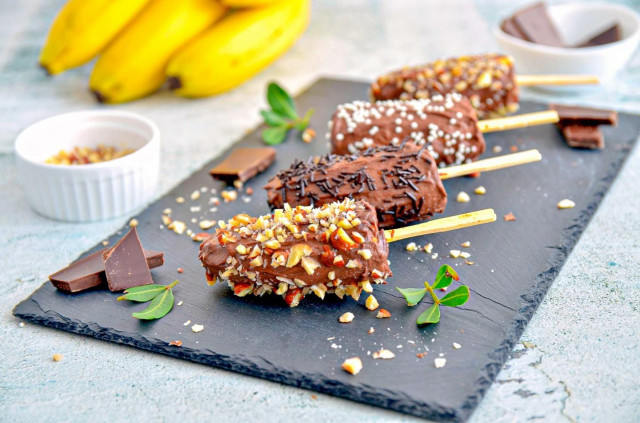Composition / ingredients
Step-by-step cooking
Step 1:
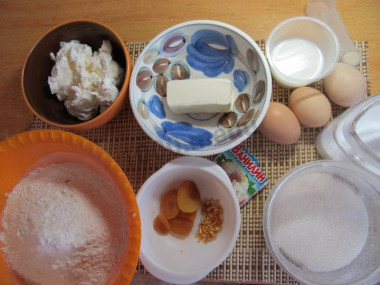
Necessary ingredients for the dough
Step 2:
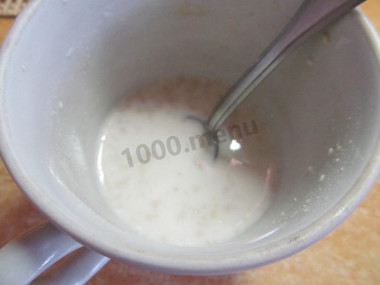
Prepare the sourdough: in warm milk (not higher than 40 degrees) add dry yeast and 1 tsp. l. sugar. Then add 1 tablespoon of flour, mix until the yeast dissolves
Step 3:
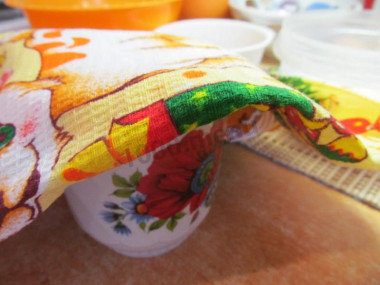
Leave in a warm place for 30 minutes
Step 4:
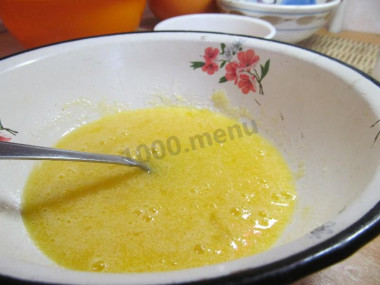
Separate the protein of 1 egg from the yolk and leave it for the glaze. Beat the eggs with sugar, vanilla and a pinch of salt.
Step 5:
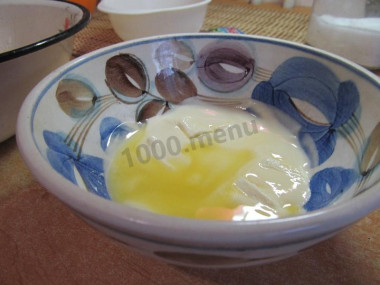
Butter must be melted in a water bath or in a microwave
Step 6:
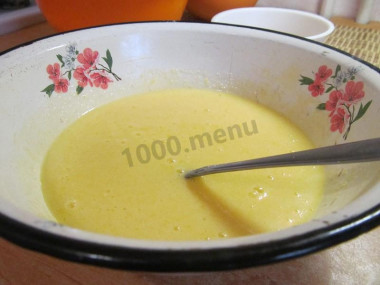
Mix melted butter and beaten eggs
Step 7:
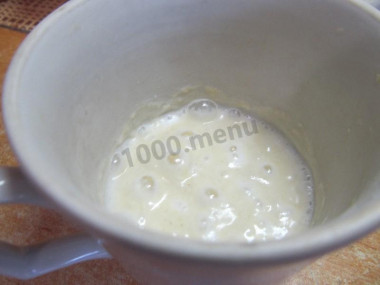
After the specified time, the sourdough rose
Step 8:
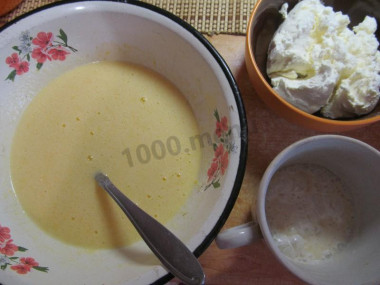
Now combine cottage cheese, sourdough and egg mass, mix well
Step 9:
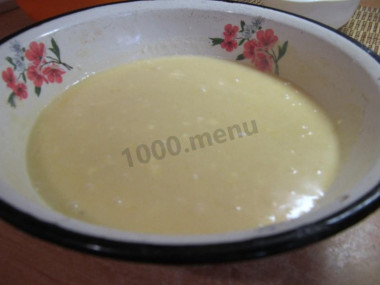
This is the mass you get
Step 10:
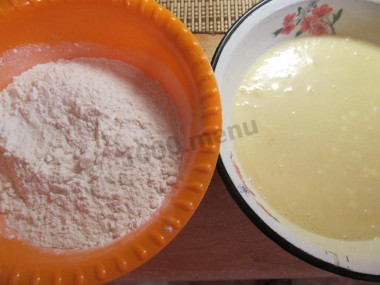
Add flour gradually
Step 11:
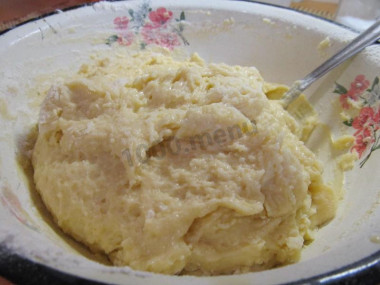
Now knead the dough well
Step 12:
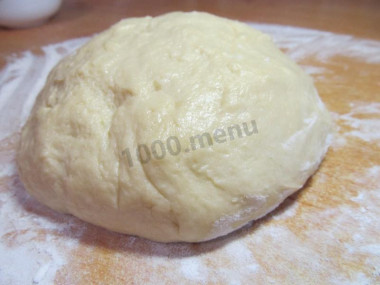
It turns out to be quite soft and sticky
Step 13:
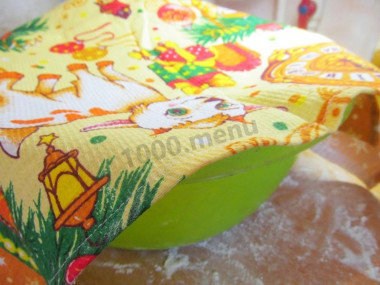
Leave in a warm place for 1 hour. Avoid drafts when raising the yeast dough (many housewives put dishes with dough in the kitchen cabinet or a slightly warmed and then turned off oven; if you have a modern appliance in which you can set a low heating temperature, then turn on the oven at 30 degrees and put the dough to fit into it - very convenient).
Step 14:
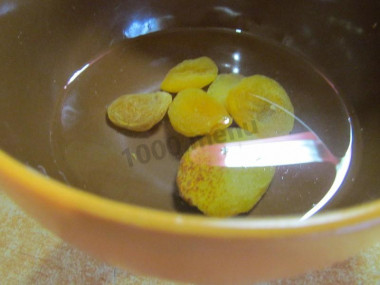
Prepare dried apricots - it needs to be washed
Step 15:
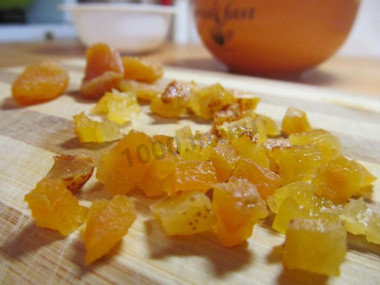
Finely chopped, can be crushed in a blender
Step 16:
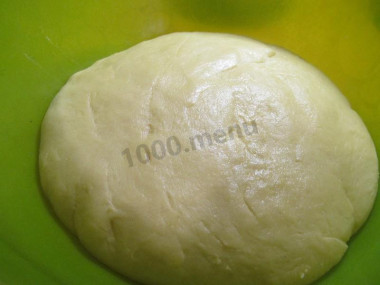
After an hour, the dough rose well
Step 17:
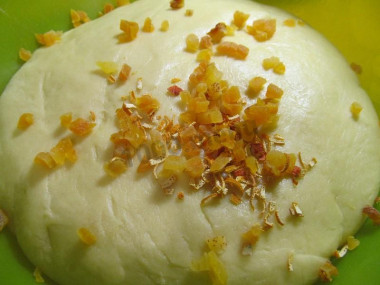
Add dried apricots and tangerine zest
Step 18:
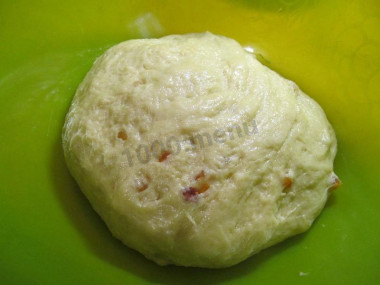
Kneading
Step 19:

Leave in a warm place for another 30 minutes
Step 20:
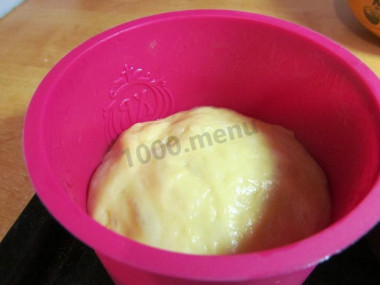
After the specified time, we lay out the molds, greased with vegetable oil. This year I have a silicone mold with a beautiful engraving "XB";
Step 21:
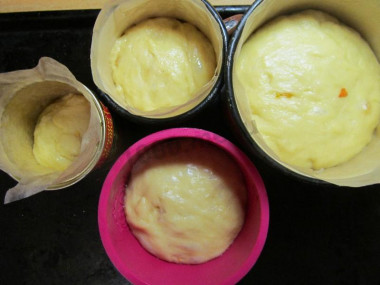
I got 4 pasochki. Any round tin cans, large metal mugs, etc. can be used as molds. If the mold is not silicone, its bottom and sides must be covered with baking parchment. Leave to rise for another 20-30 minutes
Step 22:
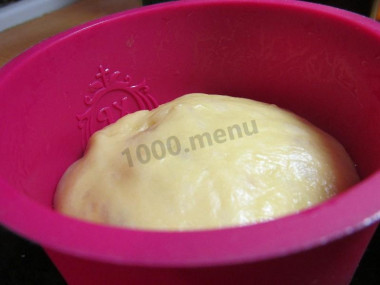
When the cakes have risen, we send them to the slightly open oven with minimal heat for 10 minutes so that the dough rises even better. Then we close the oven, add the heat to 180 degrees and leave to bake for 35-45 minutes, depending on the size of the molds and the oven
Step 23:
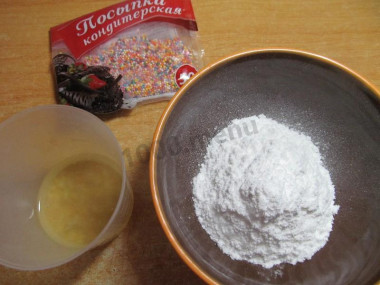
For the next step, we will need the protein of 1 egg left over from the dough, powdered sugar, confectionery sprinkles and lemon juice
Step 24:
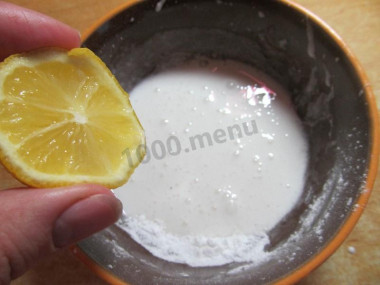
Whisk the protein with powdered sugar, add lemon juice
Step 25:
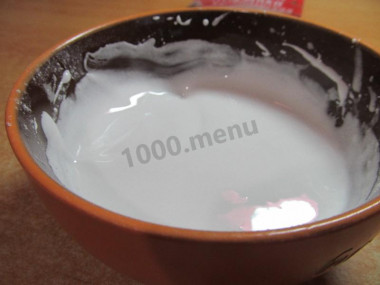
It turns out that such a brilliant dazzling white thick glaze
Step 26:
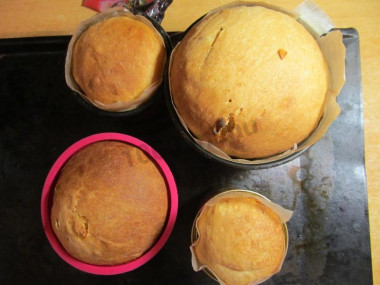
After 40 minutes, the cakes are baked, you can check the readiness with a wooden stick
Step 27:
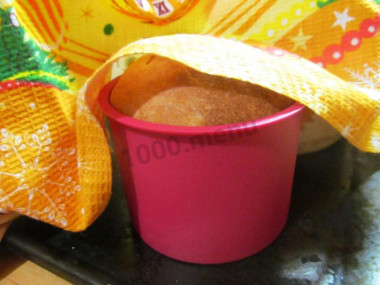
Cover with a towel and leave to cool
Step 28:
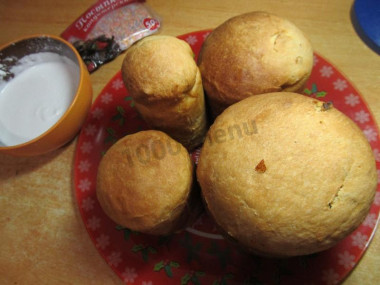
When the cakes have cooled down, carefully remove them from the molds
Step 29:
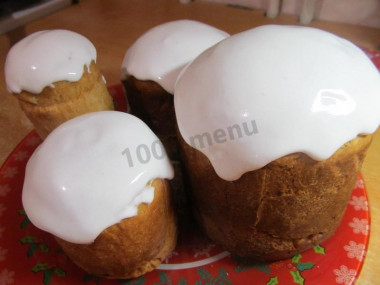
Smear with glaze
Step 30:
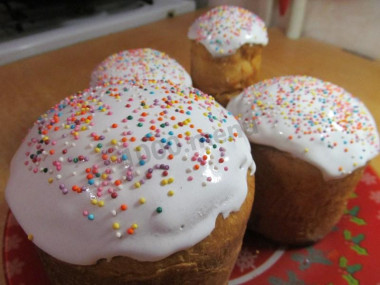
Decorate with sprinkles
Step 31:
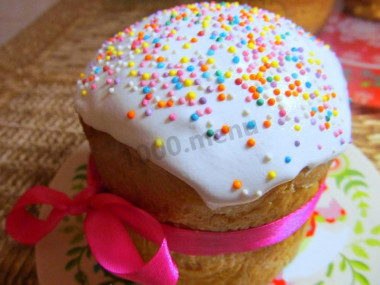
That's the beauty turned out, and the fragrance is just magical - it's a pity that it can't be conveyed... The next day the glaze will harden and the cakes will be ready
Step 32:
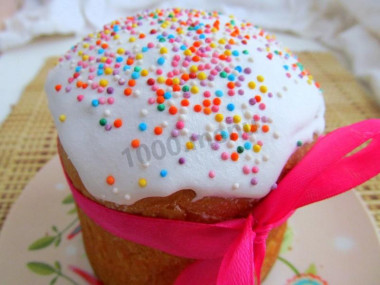
And here they are the next day! It can be seen that the glaze has frozen well
Step 33:
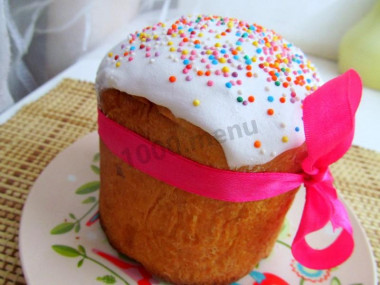
Help yourself and have a happy Easter!
Attention! The dough should be sticky enough, it's hard to stir with your hands. But the cake will be airy.
I always bake cakes on Maundy Thursday or Saturday, on the eve of Easter, as well as on Krasnaya Gorka - a week after Easter. Use this recipe and you and he will not disappoint you!
Important! Using dry yeast, it should be borne in mind that they occur in two forms: active and instant (read the instructions carefully before use!).
Active dry yeast looks like beads or small balls. Before applying them, they must be brought out of the "sleep mode". To do this, the active yeast is diluted in warm sweet water, milk or whey. The resulting bubbles, foam or "cap" indicate that the yeast is ready for further use. Active dry yeast must be brought to complete dissolution in the liquid, otherwise, due to the remaining grains, the dough may not rise and the baking will be spoiled (yeast grains that have not dissolved in the liquid and got into the dough will no longer disperse on their own, which means they will not work).
Instant dry yeast is easier to use. They do not need to be activated before use. Such yeast, along with other ingredients, is simply added to the dough. As a result, the baking time is reduced.
It should also be remembered that both types of dry yeast may differ in their activity from different manufacturers.
The liquid in which yeast is bred should be pleasant to the touch, no higher than 40 degrees. Why is this important? In a warm environment, yeast is well activated, in a hot one it will die, and in a cold one it simply will not work. To avoid unpleasant surprises, check the yeast before mixing with the rest of the ingredients. Pour a little warm milk into a bowl, stir in the yeast. Cover the bowl with a kitchen towel and put it in a warm place without drafts for 10-15 minutes. During this time, a foam yeast cap should appear on the surface of the sponge. If this did not happen, then the fermentation process has not started (the yeast is overdue or spoiled). In this case, it is worth taking other yeast, otherwise baking will not work.
Caloric content of the products possible in the composition of the dish
- Whole cow's milk - 68 kcal/100g
- Milk 3.5% fat content - 64 kcal/100g
- Milk 3.2% fat content - 60 kcal/100g
- Milk 1.5% fat content - 47 kcal/100g
- Concentrated milk 7.5% fat content - 140 kcal/100g
- Milk 2.5% fat content - 54 kcal/100g
- Chicken egg - 157 kcal/100g
- Egg white - 45 kcal/100g
- Egg powder - 542 kcal/100g
- Egg yolk - 352 kcal/100g
- Ostrich egg - 118 kcal/100g
- Cottage cheese of 40% fat content - 466 kcal/100g
- Cottage cheese of 20% fat content - 233 kcal/100g
- Cottage cheese of 18% fat content - 226 kcal/100g
- Cottage cheese of 10% fat content - 156 kcal/100g
- Low-fat cottage cheese - 75 kcal/100g
- Cottage cheese with sour cream - 260 kcal/100g
- Fruit cottage cheese - 147 kcal/100g
- Soft dietary cottage cheese - 170 kcal/100g
- Vitalinia cottage cheese - 64 kcal/100g
- Cottage cheese "morning" ( "danone") without sugar - 91 kcal/100g
- Cottage cheese - 156 kcal/100g
- Whole durum wheat flour fortified - 333 kcal/100g
- Whole durum wheat flour, universal - 364 kcal/100g
- Flour krupchatka - 348 kcal/100g
- Flour - 325 kcal/100g
- Granulated sugar - 398 kcal/100g
- Sugar - 398 kcal/100g
- Butter 82% - 734 kcal/100g
- Amateur unsalted butter - 709 kcal/100g
- Unsalted peasant butter - 661 kcal/100g
- Peasant salted butter - 652 kcal/100g
- Melted butter - 869 kcal/100g
- Dried apricots - 215 kcal/100g
- Uryuk - 290 kcal/100g
- Dried peaches - 254 kcal/100g
- Salt - 0 kcal/100g
- Lemon juice - 16 kcal/100g
- Vanillin - 288 kcal/100g
- Powdered sugar - 374 kcal/100g
- Egg whites - 44 kcal/100g
- Tangerine peel - 97 kcal/100g
- Confectionery sprinkles - 395 kcal/100g
- Dry yeast - 410 kcal/100g

